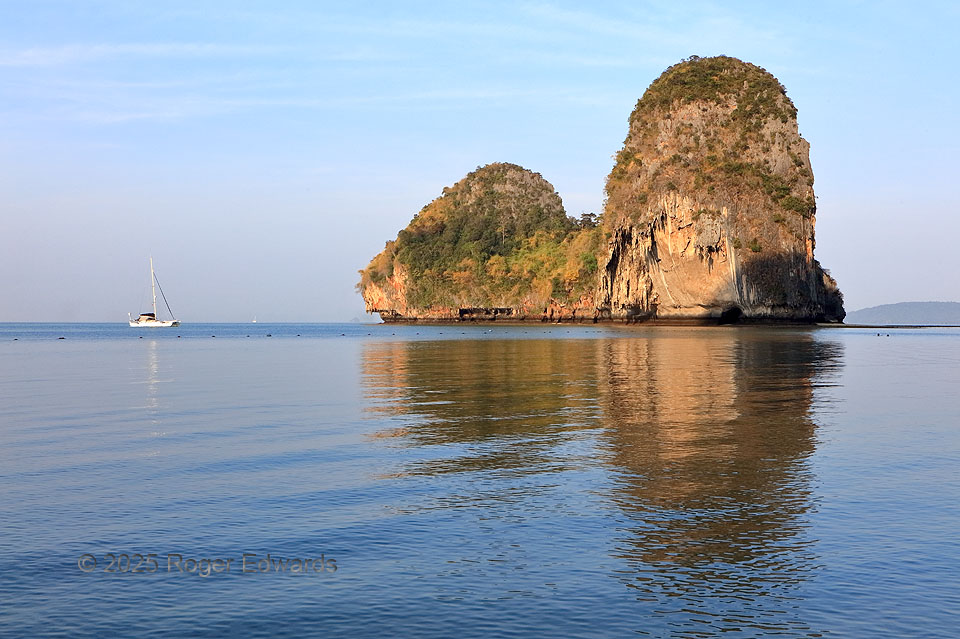
Formed and shaped by water throughout its history, southern Thailand’s Ko Rang Nok forms a splendid island example of the area’s characteristic tower karst. Here, warm “golden hour” light bathes the island, shortly after sunrise. Reef limestones in the Permian Ratburi Formation, similar in age and development processes as the rock around Carlsbad Caverns in New Mexico, likewise have developed numerous caves and caverns in their millions of years above sea level, while also differentially eroding softer parts away in the tropical maritime climate here. “Maritime” also explains why karst towers facing the ocean (as islands or on the mainland) have “waistlines” just above the usual waterline. Saltwater wave action atop the ebb and advance of tides adds erosive forces not present above, causing both the overhang around the island’s lower edge and the small sand beach on its right (northeast) side. Underwater waistlines from times of lower sea level may exist too, hidden in younger sediment. As outer-edge limestone wears, it spalls off and plunges into the water, causing sharp-edged overhangs such as visible on the lower near side of the eastern, higher tower. Where legally permitted, and the surface stone is not too loose, these formations are popular for rock climbing.
Phra Nang Beach, Thailand (2 Feb 25) Looking WNW
8.0046, 98.8402